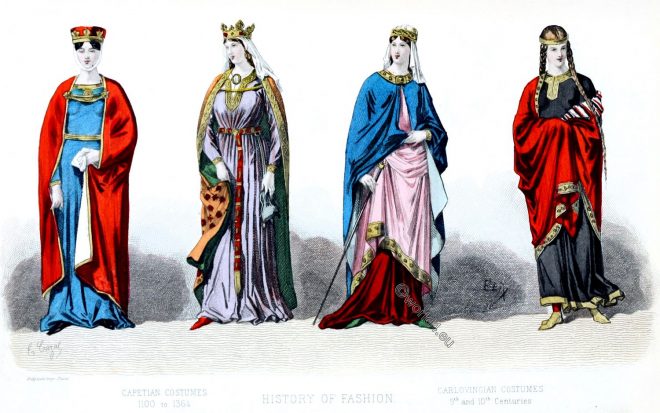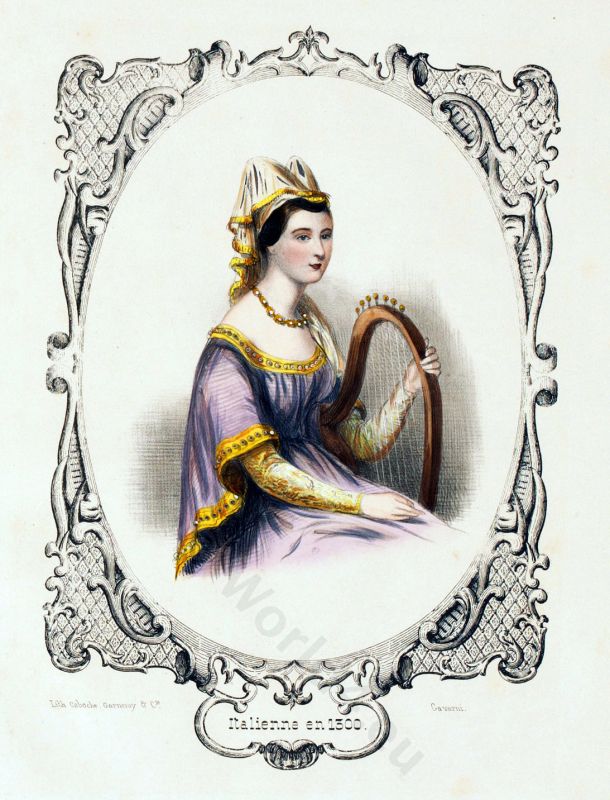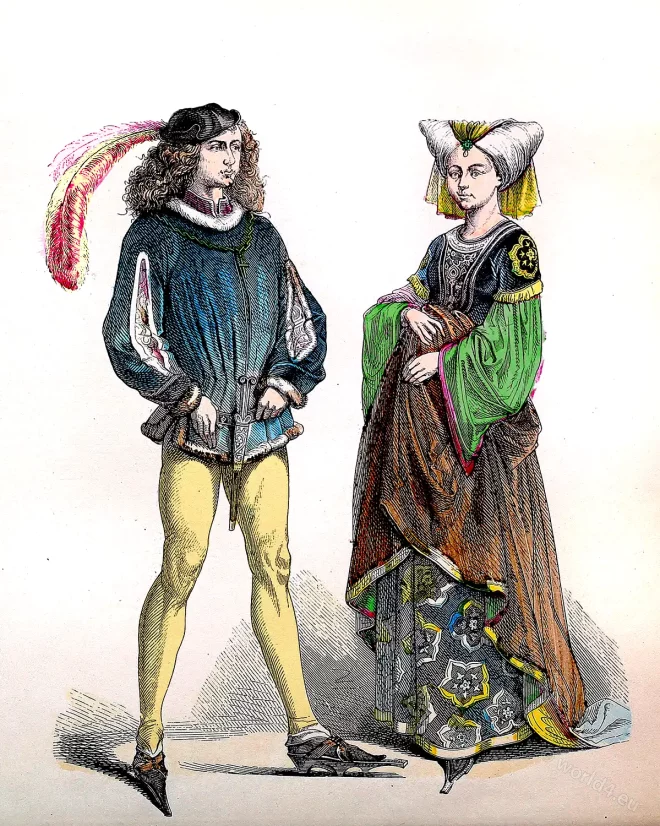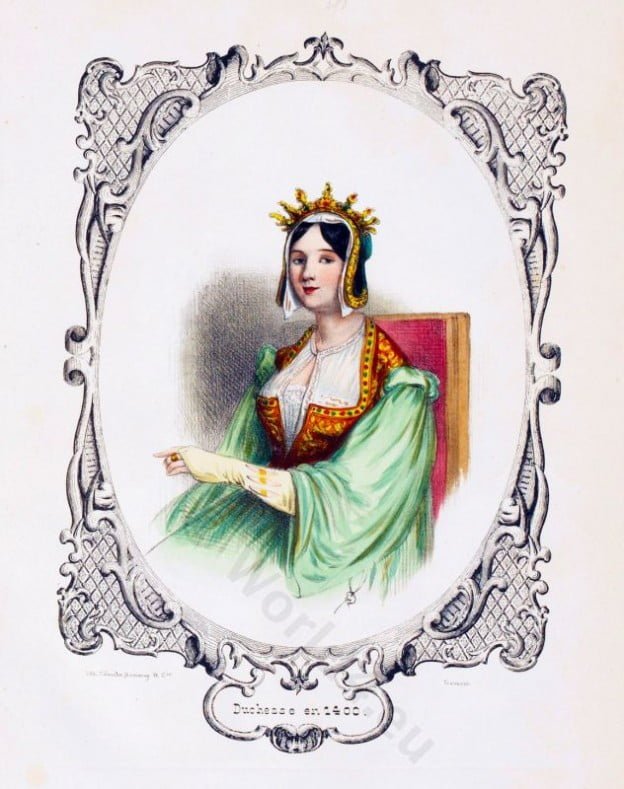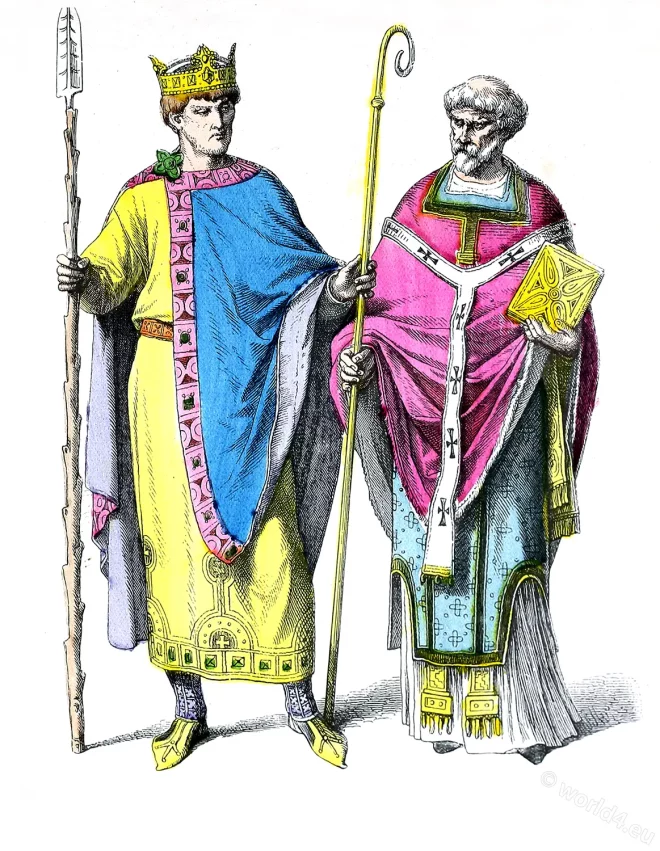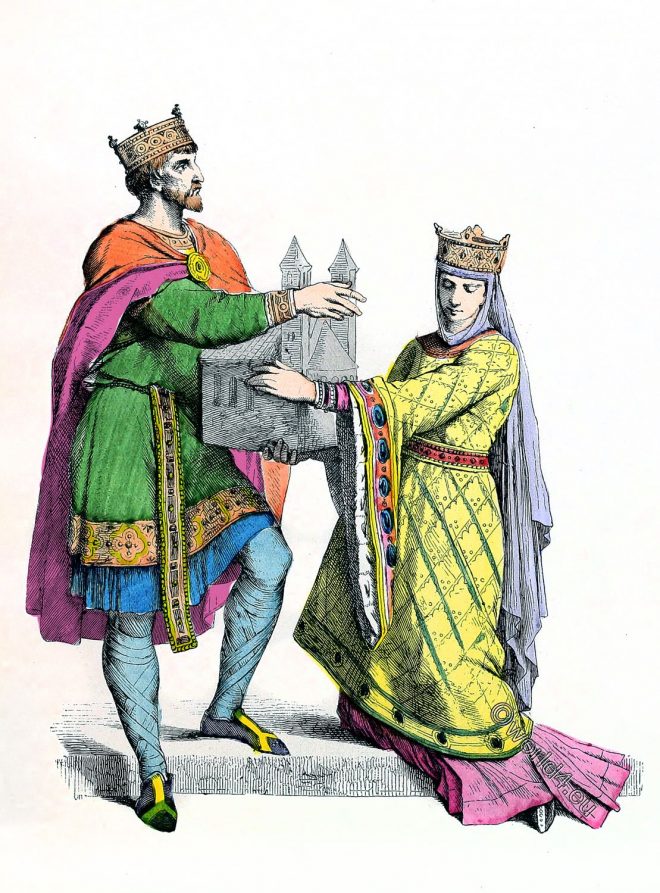French fashion history. Middle Ages. 1422 to 1483. Reign of Charles VI, called the Beloved (French: le Bien-Aimé), Charles VII, called the Victorious (French: le Victorieux) and Louis XI. called “Louis the Prudent” (French: le Prudent).
Tag: Medieval costume
Medieval costume history. The period between the end of antiquity and the beginning of modern times about the 6th to the 15th century. It includes as superordinate, the Byzantine, Merovingian, Carolingian and Burgundian costume eras. Therein are the Gallic, Celtic, English-Saxon, Normans, Gothic, Romanesque included.
The Carolingian fashion period 752-987. Reign of Charlemagne.
Reign of Charlemagne – The women of the tenth century wear two tunics – Judith’s belt – A veil is obligatory – Miniatures in the Mazarin Library- Charles the Bald’s Bible Shoes – Dress of Queen Lutgarde – Dress of Rotrude and Bertha – Gisla and other kings women of the Emperor – The Successors of Charlemagne – Cannes – Adelaide of Vermandois – The dress of widows.
Italian noblewoman with heart shaped hennin. 13th century.
Italian noblewoman. Burgundy fashion era. Medieval 13th century clothing. Here hair is confined by a net called a crespine or crespinette. She wears a headwear, the white colored barbette with veil (Still seen on… Read More
German knight on horse. Middle ages. 12th c.
On the armor or corslet he wears a surcoat. Hauberk, boiler cap, leg braces, knee tile, almond-shaped shield.
Burgundy fashion. France nobility 1480.
The fifteenth century was an exaggeration of the modes of the fourteenth.
The Duchesse. French nobility. 14th c..
The woman wears a tight-fitting bodice, furthermore the pleated Chiopa with wide cap sleeves.
Frankish King Henry II., and Bishop of the 11th century.
Figure of Frankish King Henry II., 973-1024, called the saints and a Frankish bishop.
Carolingian West Frankish king Charles II the Bald
Frankish King Charles II the Bald, with two pages. Charles II dit le Chauve. Carolingian 9th century
Noble Franconian women. Medieval clothing 10th century.
The history of costumes. Twenty-ninth arch. X. Century. Illustration by A. Müller. Munich picture sheet no. 592.
King and Queen of the Franks. Medieval nobility 10th century.
The history of costumes. Frankish king and queen. The history of costumes.


